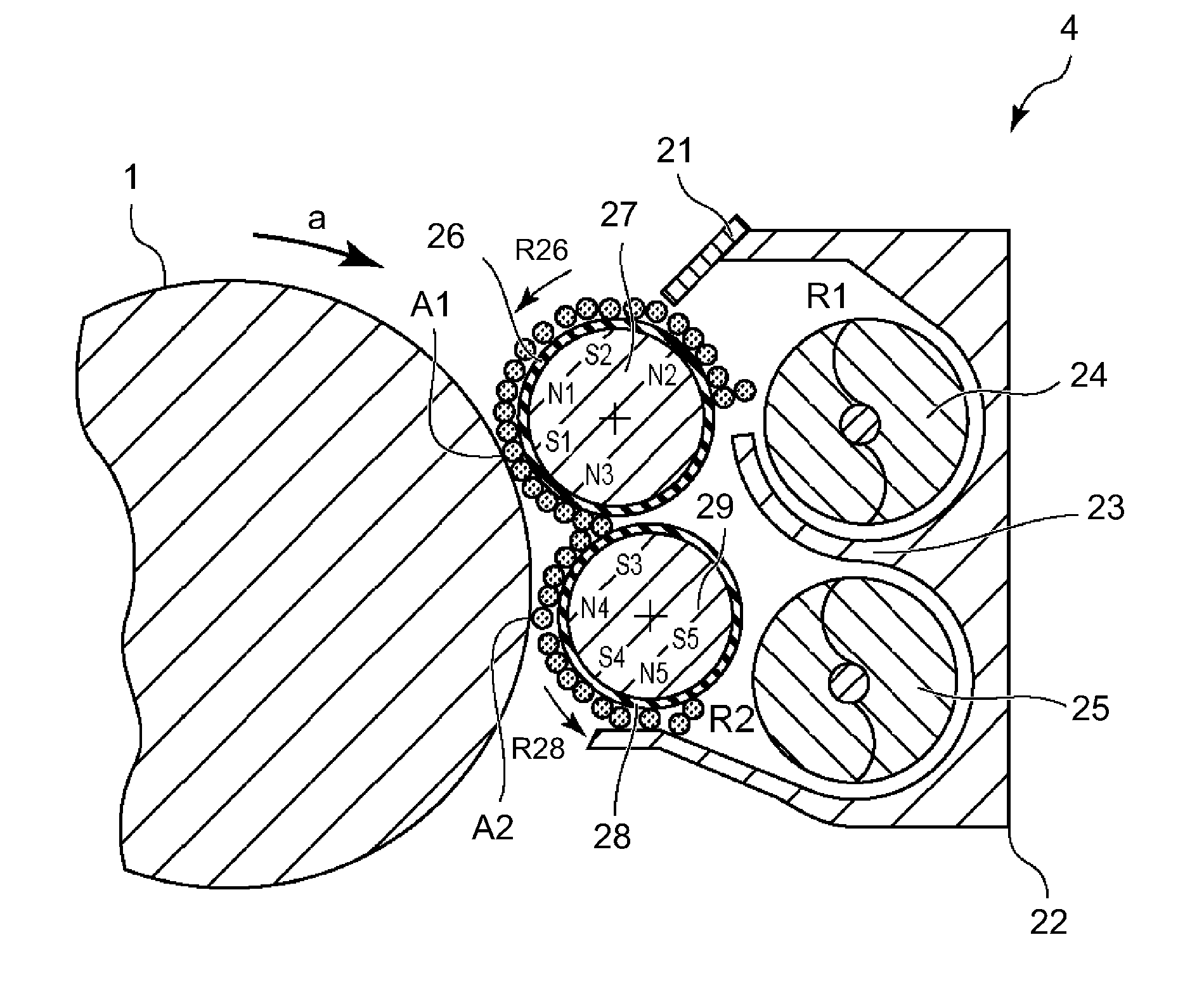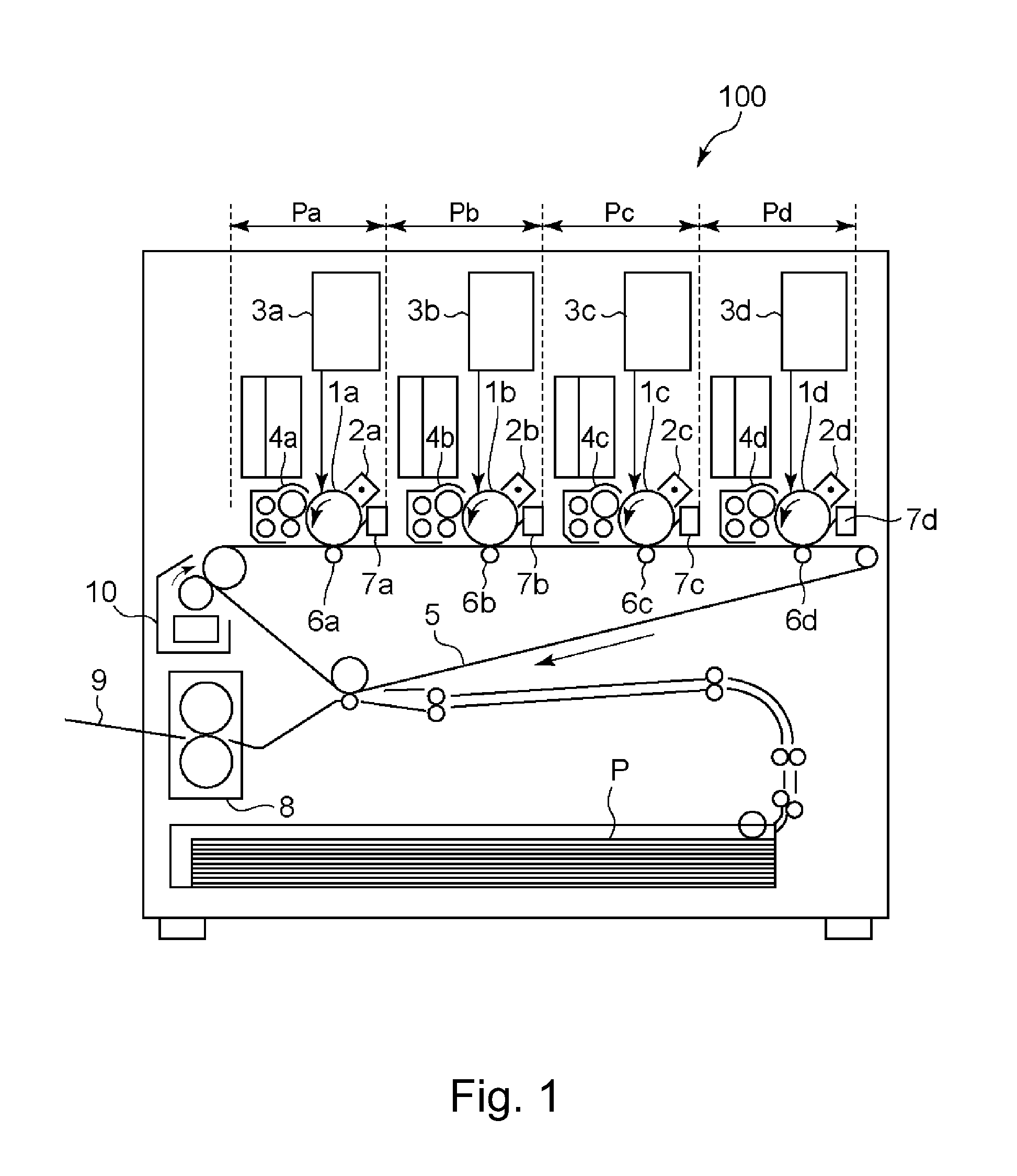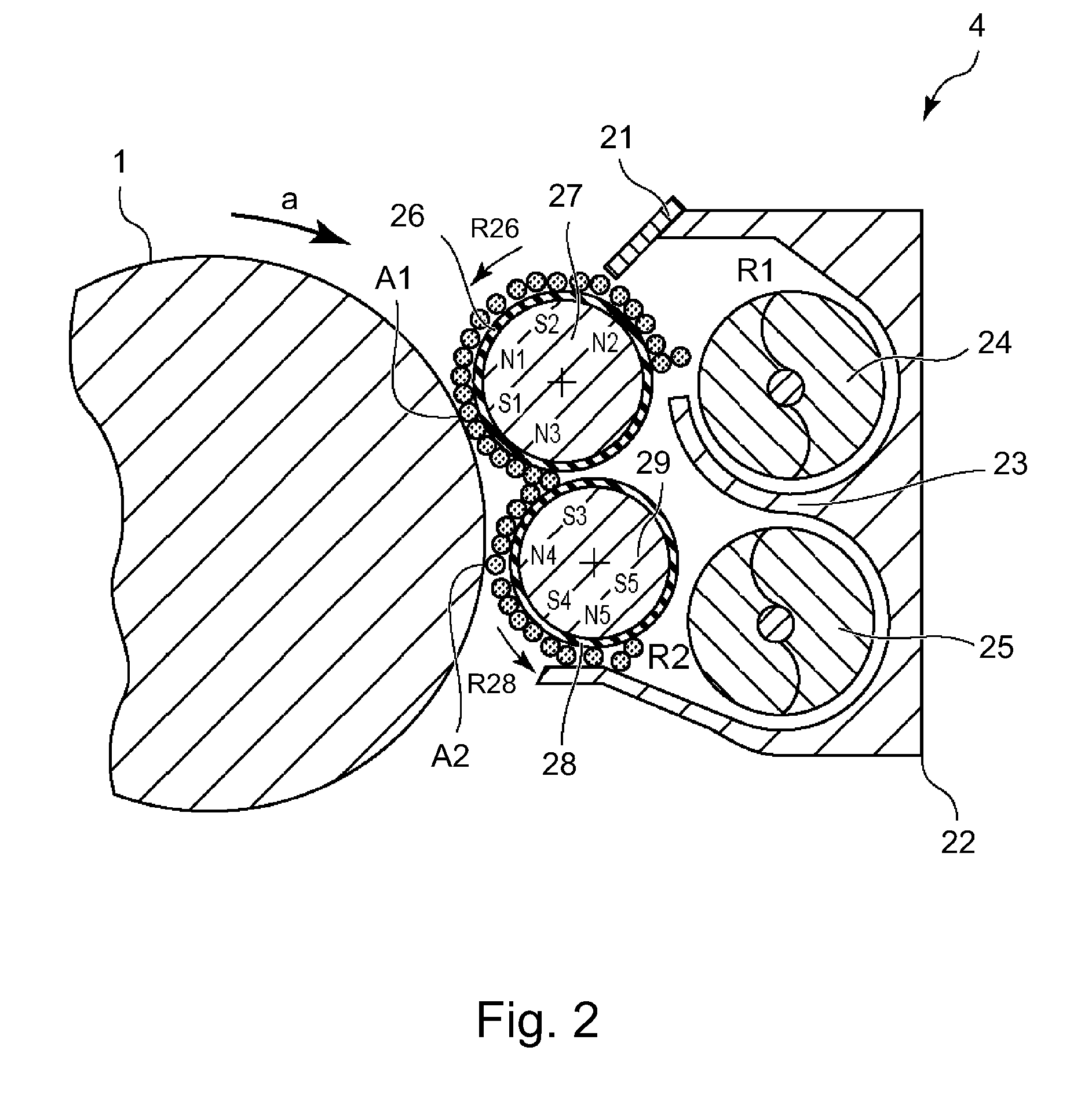Developing device
a technology of developing sleeves and developing sleeves, applied in the field of developing sleeves, can solve the problems of reducing the feeding performance of developing sleeves, deformation of developing sleeves, and inability to achieve suitable image formation by using single developing sleeves, etc., and achieve the effect of reducing an image d
- Summary
- Abstract
- Description
- Claims
- Application Information
AI Technical Summary
Benefits of technology
Problems solved by technology
Method used
Image
Examples
embodiment 1
Image Forming Apparatus
[0026]FIG. 1 is an illustration of a structure of an image forming apparatus. FIGS. 2 and 3 are illustrations of a structure of a developing device. As shown in FIG. 1, an image forming apparatus 100 is an intermediary transfer type full-color printer of the tandem type in which image forming portions Pa, Pb, Pc and Pd for different colors are provided along an intermediary transfer belt 5. Along the intermediary transfer belt 5 (intermediary transfer medium), together with a monochromatic image forming portion, a plurality of color (chromatic) image forming portions are disposed.
[0027]At the image forming portion Pa, a yellow toner image is formed on a photosensitive drum 1a as an image bearing member and then is primary-transferred onto the intermediary transfer belt 5. At the image forming portion Pb, a magenta toner image is formed on a photosensitive drum 1b and then is primary-transferred superposedly onto the yellow toner image on the intermediary trans...
embodiment 2
[0054]In the image forming apparatus described in Embodiment 1, in the case where the developing sleeves are changed in groove inclination, the developing sleeves are different in developer feeding property.
[0055]With respect to the feeding property of the groove-shaped sleeve, a (developer) feeding force acts on the grooves with respect to the thrust direction. In the case of the oblique line-like grooves, as shown in FIG. 6, when an angle formed between each groove and the thrust direction of the developing sleeve is θ (θa or θb), a feeding force corresponding to cos θ with respect to the vertical direction of the oblique line-like grooves acts in the sleeve rotational direction.
[0056]For this reason, the feeding force of the developing sleeve is changed when the inclination (angle) of the oblique line-like grooves is changed, and therefore an amount of the developer conveyed on the developing sleeve is changed. When the amount of the developer on the developing sleeve is changed,...
embodiment 3
[0064]The oblique line-like grooves has a feeding force in the axial (thrust) direction in addition to the sleeve rotational direction. For that reason, there can arise a possibility that the developer is liable to be localized in one side of the developing sleeve with respect to the thrust direction during the conveyance thereof on the developing sleeve. In Embodiment 1, both of the oblique line-like groove angles are 90 degrees or more but in that case, the thrust feeding directions of the developer on the respective developing sleeves becomes the same, so that the developer is more liable to be localized during the conveyance thereof on the two developing sleeves. When the developer is localized, there arises a possibility that the developer is leaked out to the outside of a feeding region at the sleeve end portion.
[0065]Therefore, in this embodiment, as shown in FIG. 8, oblique line-like groove angles of an upstream developing sleeve 26 provided in an upstream side and a downstr...
PUM
 Login to View More
Login to View More Abstract
Description
Claims
Application Information
 Login to View More
Login to View More - R&D
- Intellectual Property
- Life Sciences
- Materials
- Tech Scout
- Unparalleled Data Quality
- Higher Quality Content
- 60% Fewer Hallucinations
Browse by: Latest US Patents, China's latest patents, Technical Efficacy Thesaurus, Application Domain, Technology Topic, Popular Technical Reports.
© 2025 PatSnap. All rights reserved.Legal|Privacy policy|Modern Slavery Act Transparency Statement|Sitemap|About US| Contact US: help@patsnap.com



